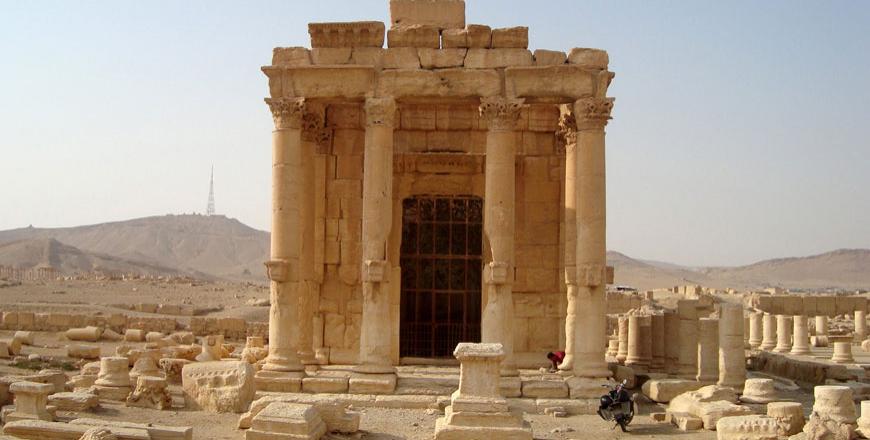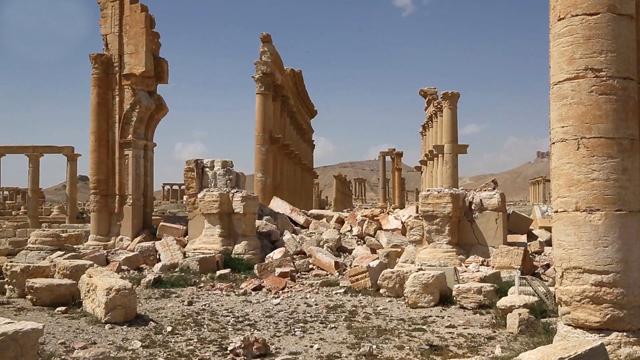You are here
UNESCO condemns Daesh destruction of Syria’s Palmyra antiquities
By AFP - Jul 04,2015 - Last updated at Jul 05,2015

An image made available by propaganda Islamist media outlet Welayat Halab on Thursday allegedly shows a Daesh militant destroying ancient artifacts smuggled from the Syrian city of Palmyra, a 2,000-year-old metropolis and an UNESCO World Heritage Site located 215 kilometres northeast of Damascus (AFP photo/HO/Welayat Halab)
PARIS — UNESCO on Friday condemned the destruction by Daesh militants of antiquities in the Syrian city of Palmyra, describing it as an attempt to strip the people of their heritage in order "to enslave them".
"These new destructions of cultural goods of the site of Palmyra reflect the brutality and ignorance of extremist groups and their disregard of local communities and of the Syrian people," said Irina Bokova, UNESCO director-general.
Among the antiquities destroyed was the Lion Statue of Athena — a unique piece of more than 3 metres high that stood outside a museum, which was smashed on Saturday, Bokova said.
The limestone statue was discovered in 1977 by a Polish archeological mission at the temple of Al Lat, a pre-Islamic Arabian goddess, and dated back to the 1st century BC.
Bokova also expressed outrage at the destruction of funerary busts of Palmyra, a renowned UNESCO World Heritage site captured by IS on May 21.
"The destruction of funerary busts of Palmyra in a public square, in front of crowds and children asked to witness the looting of their heritage is especially perverse," she said.
"These busts embody the values of human empathy, intelligence and honour the dead... Their destruction is a new attempt to break the bonds between people and their history, to deprive them of their cultural roots in order to better enslave them," she added.
She urged action against the "manipulation of religion".
Related Articles
BEIRUT — The Daesh terror group has blown up a famed temple in Syria's ancient Palmyra, in an act the UN condemned as a war crime and an "im
Daesh fighters advanced to the gates of ancient Palmyra Thursday, raising fears the Syrian world heritage site could face destruction of the kind the jihadists have already wreaked in Iraq.
DAMASCUS — Palmyra's renowned Temple of Bel, blown up by the Daesh terror group last year, is not beyond repair but the full extent of













